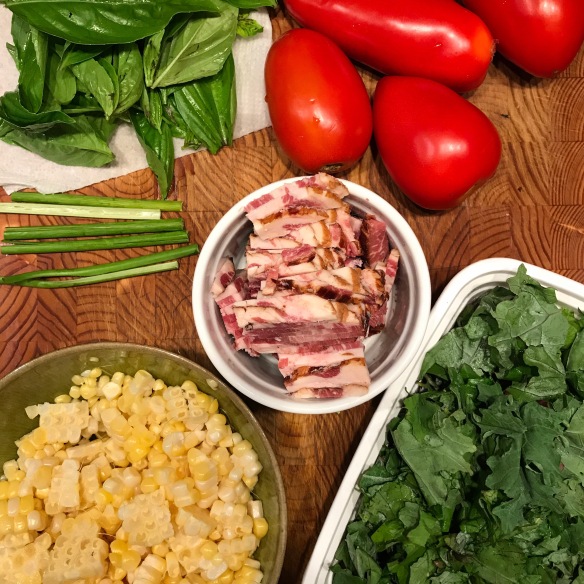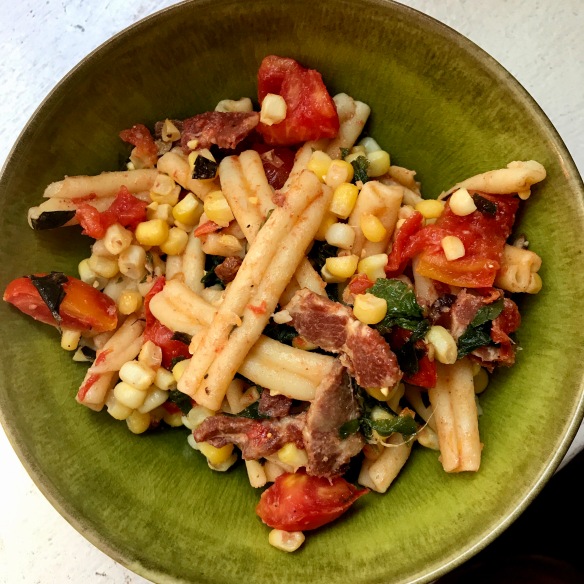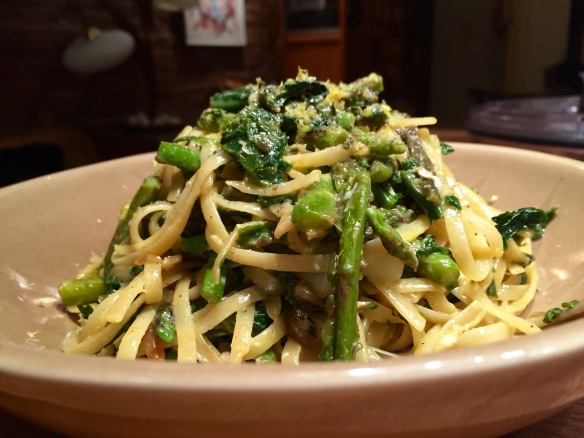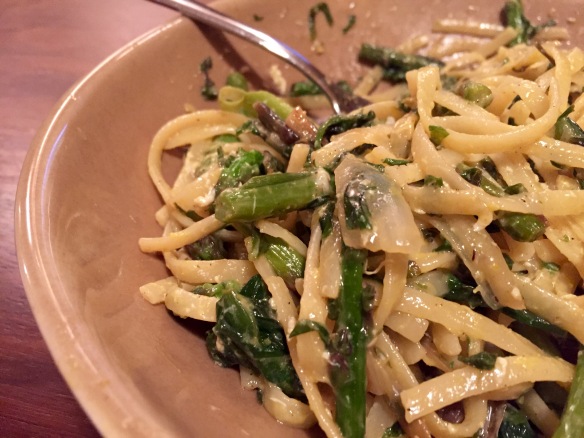Leila and Chris were due for dinner last night. Tuesday looked very different when I extended the invitation the week before, but I am learning that the consulting life comes with an ever-evolving calendar. I texted from a client meeting at 4:30 to suggest that they come around 7:30 and rushed back to my neighborhood to pick up this week’s CSA bounty. I made it home around 6:30, but still didn’t have a clue what I was going to make.
Luckily, I had some Flying Pigs Farm Canadian bacon in the freezer to complement Farmer Ted‘s peak summer vegetables. By the time I had stashed the last of the onions and washed and dried the gorgeous purple lettuce, I’d hatched a plan. This is a meal that comes together fast, so you’ll want to have everything prepped and ready to go before you start sautéing.

Gemelli with Corn, Tomatoes & Canadian Bacon
- 1 pound good quality gemelli or other short pasta shape
- 2 tablespoons olive oil
- 1 garlic scape, cut into long segments and sliced down the center (or 3 cloves regular garlic)
- 4 ounces Canadian bacon, cut into 1″ strips
- 2 ears sweet corn, niblets stripped
- 2 handfuls roughly chopped kale
- 4 plum tomatoes, chopped
- 1 handful fresh basil leaves, chopped
- salt and pepper
Place a large pot of salted water over high heat. When the water in your pot is boiling, add the pasta and give it a quick stir. Cook 8 minutes or until just before al dente. (If you game this right, you should be able to transfer the pasta straight from the pot to the pan. If not, no worries. Just be sure to save some of the cooking liquid when you drain the pasta.) Meanwhile, heat a large skillet up to medium with the olive oil. Add the garlic and cook, stirring continuously for a few minutes until you pick up the smell of toasted garlic. Remove and discard the garlic. Add the Canadian bacon and cook until most of the fat is released but before it gets crispy. Add the corn and cook for a couple more minutes. Add the kale and cook until wilted. Add the tomatoes and cook another couple of minutes. Then add the pasta plus about half a cup of the cooking water. Crank the heat up to high and cook for two more minutes, stirring constantly. Season with salt and pepper. Stir in the basil off the heat.
I failed to get a shot of last night’s meal, which included a salad with the aforementioned purple lettuce, yellow tomatoes and crumbled ricotta salata in a classic red wine vinaigrette plus hunks of crusty baguette. But I just polished off this bowl of leftover pasta for lunch and am surprised to report that it was even tastier served cold the next day. (I suspect this has to do with the pig fat having some time to permeate the pasta.)




















